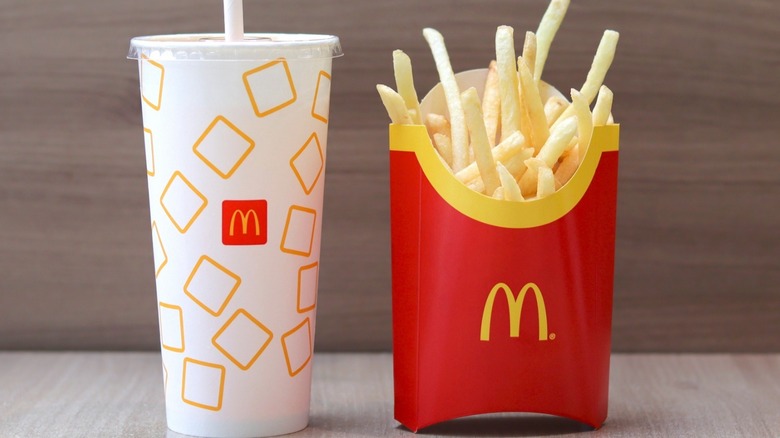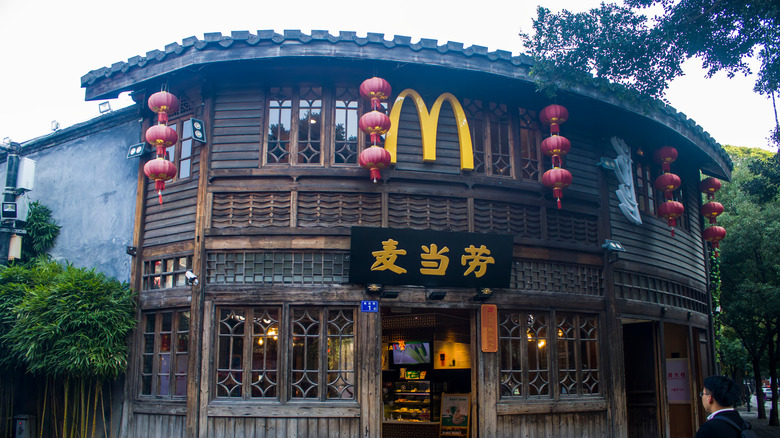How McDonald's Became A Fast Food Giant In China
There's possibly nothing more American than pulling up to a McDonald's drive-thru, chowing down on a Big Mac, and gulping down an obnoxiously large soda. However, there is also a growing love for fast food globally. Thanks to globalization and American-born fast food chains increasing their presence all over the world, more and more countries are enjoying a taste of U.S. culture; with over 38,000 locations in over 100 countries, McDonald's is no longer just an American thing.
At the time of publication, McDonald's has roughly 4,500 restaurants in China and plans to open hundreds more there in 2023. But the burger chain's rise in the country was not always smooth sailing, as it encountered plenty of growing pains while trying to establish itself in this critical global market. The fast food chain opened its first mainland location in China in 1990 and grew to over 300 locations in 2002. At first, McDonald's struggled to find footing in the country, as it had to compete with already established chains like KFC, which is still to this day the number one fast food chain in China.
Initially, McDonald's missed the mark on how to market its products to Chinese consumers. Due to cultural misunderstandings and supply chain issues, sales weren't as strong right out of the gate as expected. So how did the fast food chain turn things around in China?
McDonald's leaned into Chinese culture
McDonald's quickly realized that it couldn't copy-paste the same business model from one country to another, it had to figure out the nation's tastes and develop specific strategies for the new market. To do so, the chain embraced Chinese culture by adding menu items like rice dishes, congee, and bubble tea while also heavily marketing its use of fresh, quality ingredients. (Of course, there are cheeseburgers and french fries on the menu, too.)
Ultimately, the fast food company found success by continuing to listen to the customer's feedback. McDonald's redesigned its restaurants to add traditional Chinese flair and built play areas for children to better accommodate families. These thoughtful changes helped the chain gain both the trust and approval of Chinese consumers, who originally felt it was out of touch with their needs.
The move proved to be fruitful, as McDonald's is growing faster in China now than it is in the United States. By addressing what the Chinese consumer is looking for in a fast food restaurant, McDonald's will likely continue to enjoy being a household name in China for decades to come.

